For each year's first three quarters, we celebrate by sharing a list of our favorite music releases. Unlike our year-end lists, these quarter features are casually compiled, with an aim to spotlight the underdogs and the lesser-heard among the more popular picks. More from this series
Open wide! As we head deeper into 2019, decade-end lists will start vomiting across our fractured media landscape, and they’ll all be frustratingly, beautifully incomplete. Incredible music is always slipping through the cracks for various reasons, and unfortunately “timing” is one of them. Like how it went for, say, Some Rap Songs for TMT last year and Bish Bosch (RIP!) for nearly everyone in 2012, some of our favorite 2019 releases will be sacrificed due to timing.
This year’s quarter lists will hopefully temper the expected biases of these features (including our own). And if these first few months are any indication, then we can expect not so much decade-defining statements as simple gestures oscillating between specificity and ubiquity: from death to immortality (Nivhek, ana roxanne), from schizoid psychodrama to black sprituality (j. b. glazer, Solange), from loss to wholeness (Maja S. K. Ratkje, Crystallmess), from a passing void we hardly knew was there (Nonlocal Forecast) to worlds that never really existed (The Caretaker). It will be diffuse (Triad God). It will be infinite (Yugen Blakrok). It will be Universal (Ariana Grande). WOW!
Love you all for reading the site. Thank you, thank you.
Triad God
黑社會 Triad
[Presto!?]

In 2012, the FBI shut down Megaupload, Vladimir Putin was elected president of Russia, and CERN discovered the Higgs boson. It was the end of the Mayan calendar, but the beginning of Triad God. NXB, the first collaboration between Palmistry and London-based MC Vinh Ngan, entered the Hippos in Tanks catalog at the height of the label’s iconic status, nestled alongside career highlights from the likes of James Ferraro, Nguzunguzu, Gatekeeper, Physical Therapy, and Dean Blunt. Much of what Birkut wrote in the TMT review of NXB could still be written about Triad God; Vinh is still mumbling bilingual rhymes over “dreamy, fashionable electronic music,” and indeed the phrase “fashionable electronic music” reappears in Alex Brown’s review of 黑社會 Triad. But it should also be said that 黑社會 Triad is more than a mirror of contemporary fashion. It is a lush and possessing affair, through which boundaries — between tracks, between languages, between people — become mobile and diffuse, like wafting pillars of smoke. While some have benefited in their enjoyment of 黑社會 Triad by picking up some Cantonese, I like listening to it through the veil of untranslation. In any case, its primary means of address is not verbal. In familiarity and idiosyncrasy alike, it calls upon all of us to listen in new ways.
Nonlocal Forecast
Bubble Universe!
[Hausu Mountain]
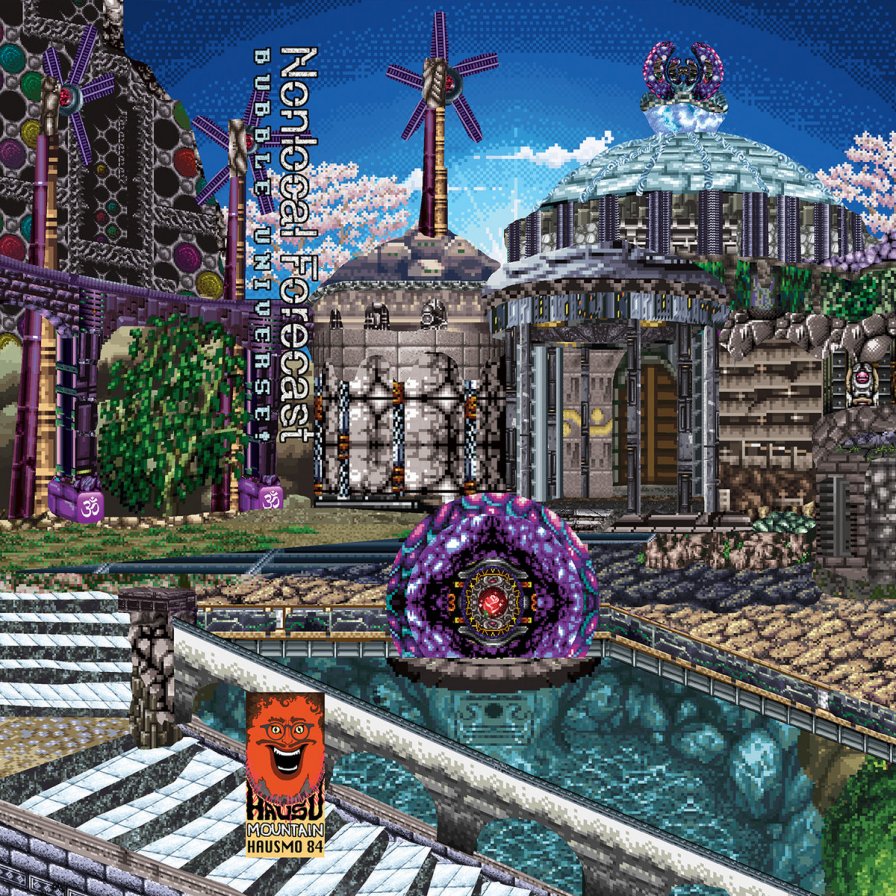
Not many people bother with cable TV anymore. The ritual of waking up, flipping the TV to The Weather Channel, putting on the coffee while the week’s temperatures and precipitation estimates linger about the screen — all that’s fading in the age of the smartphone. And with it fades a sublime musical space, where soft, kinda-jazzy music buries itself in the blue haze of a screen. The Weather Channel was among the last hideouts for the strange ambiance of fusion and New Age, most of which evokes the mood of a dentist’s office from the 90s. And yet it’s a sound I now relish, something that scratches the itch of recollection mixed with fascination. Nonlocal Forecast’s album Bubble Universe! is very much informed by music(s) associated with The Weather Channel, but Angel Marcloid successfully avoids the hackneyed theme of nostalgia by exploring a realm that’s original and hitherto unexamined. Picking up the sonic torch from a passing void we hardly knew was there, she hones in on the structural/melodic underpinnings of New Age/jazz fusion until they transform into HD MIDI iterations more suited for 2019. This polished, shimmering glacier of an album is bound to make you feel something, though what that is I can’t really tell you. But whatever it might be, it’s surely to be a feeling you can’t quite place, one that’s somehow both familiar and strange.
Maja S. K. Ratkje
Sult
[Rune Grammofon]
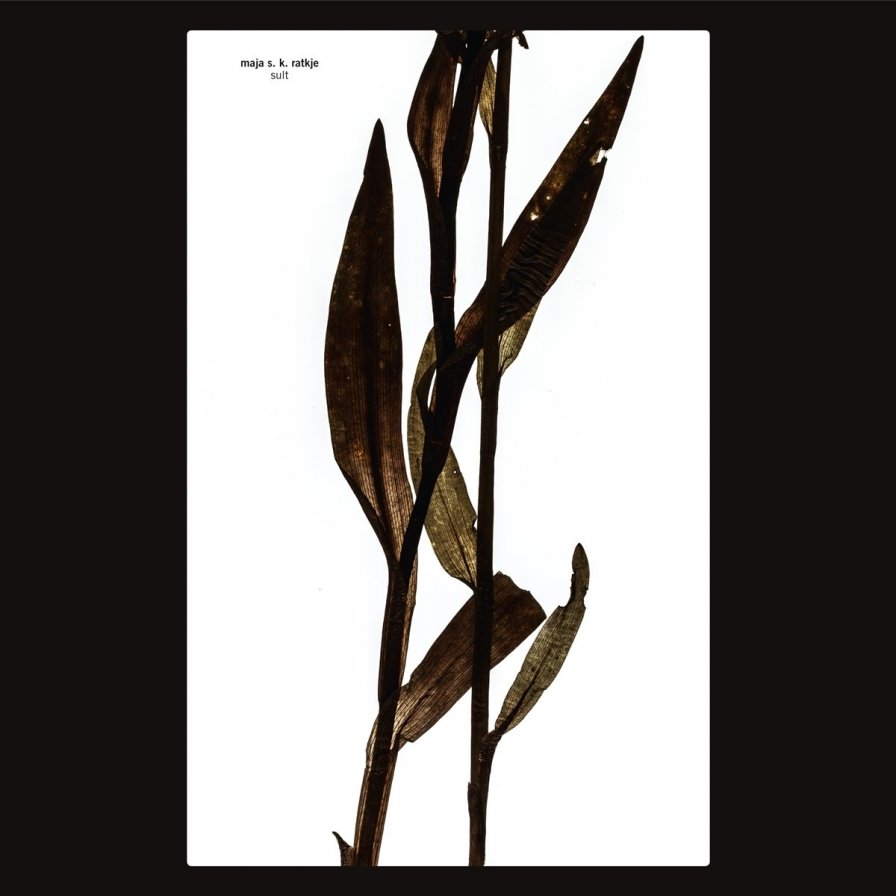
Hunger (in Norwegian, Sult) envies many ardors. There’s the book, the ballet, and now the song, each that fastens onto a hunger that is real, even if that for which is hungered has become imaginary or unreal, in loss or in satiety. For who ever desires what is not gone? While her handsewn organ spins its breathy yearning, dissolving its desire into the dust that burdens not even the air, Maja S. K. Ratkje’s voice traces that sublime but sorrowful emptiness that, in utter absence, suffers no pain of desire, full of the things it lacks. How luscious is loss! In a trembleless treble, her clarity, like love itself, bade us welcome to feast and to fast on our lack, and we felt deliciously of it.
Jay Mitta
Tatizo Pesa
[Nyege Nyege Tapes]
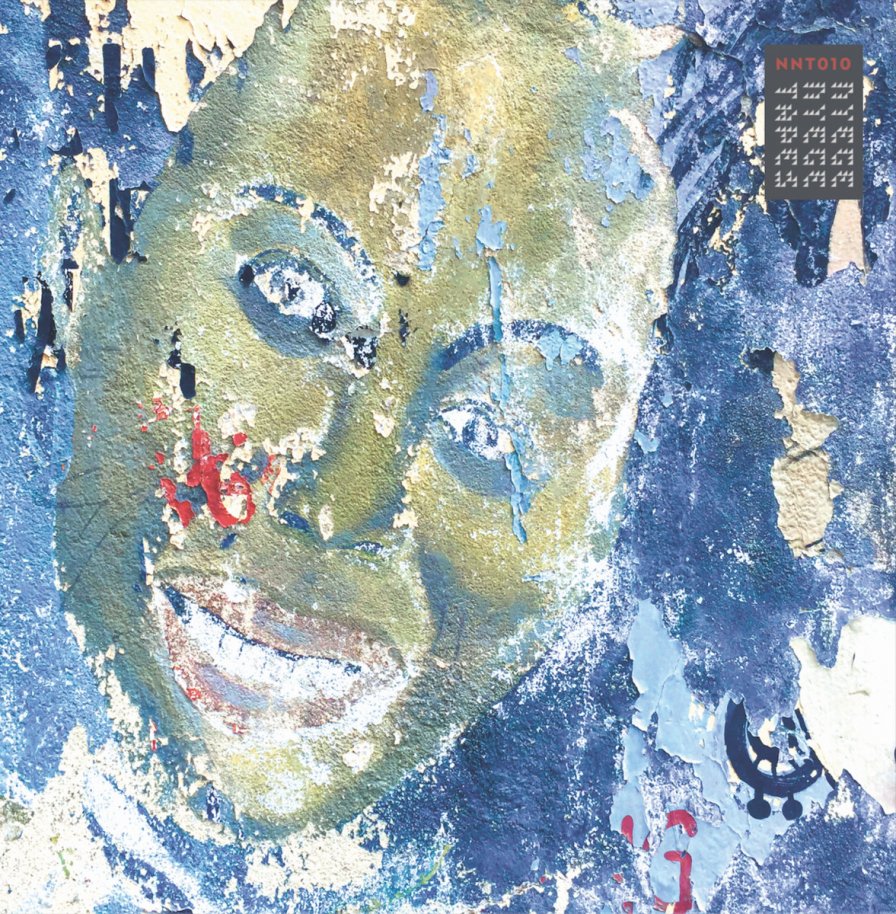
Tatizo Pesa, the second entry into the ongoing Sisso Studios series from Nyege Nyege Tapes, is always on the brink: Teetering on impassability but somehow firmly reachable. Within the boundaries of definable club music trends, past and present — witness that warp-speed Night Slugs vibe on “Mwakidimba,” the MC-led title track, and G-funk by way of DJ Rashad synth bursts passim — yet only ever riding its own wave, a sui generis eruption of knotty beats and flailing limbs. Jay Mitta constructs a singeli funhouse, one in which the generic elements are turned inside-out, splayed and punctured by relentless drums, pillars of bass, and meowing cats. Indeed, as with the other movers and shakersin Dar Es Salaam, time itself seems like a flingable object in Jay Mitta’s toolbox; I lose myself momentarily between the beats of the exemplary “Don Bet,” only finding my footing again when that delirious synth line reemerges, and then… fade out. Don’t second guess Tatizo Pesa, not for one minute.
Ariana Grande
thank u, next
[Republic]

Hey, what the heck is this fluffy sack of saccharine doing on one of TMT’s esoteric, highfalutin, indisputably taste-making quarter favorites lists?? I blame it on Grande’s illimitable croon reaching downright eerie new heights of soothing intimacy and emotional intensity on this release — coupled with the fact that it dropped riiiiiiiight in time for Valentine’s Day, and all of us here at the TMT Advanced Center For Needlessly Critical Listening were basically sucrose-high and champagne-drunk during that whole middle week of February. It also didn’t hurt that Grande’s deft modernization of classic Pop tropes and Romantic texts gave all of us aging, jaded hipsters hope that there are still a few ways left for a tune to wring a little universality out of our private romantic blunders. I mean: I’d gladly pop a dozen candy-coated tablets each day in order to wake up in the morning and feel like I wasn’t some emotionally abnormal and isolated piece of shit, wouldn’t you?
ana roxanne
Immortality
[Leaving]

Sometimes my vision flickers, and I think it’s the lights, but I’m blinking. Immortality isn’t meant to be grasped. Works meant to be built, envisioned. Choreography of landscape. This world wasn’t presented to us; Earth is torn into our reality. Daily, we accept the nature that unfolds. Woody Guthrie was and represents police. A white bowtie and cummerbund full of crumbs. Listening to ana roxanne where you please: as an infant, cooking my family’s dinner, feeling myself. Immortality is a learning experience. Listen up, frfr! It don’t matter the blinks that it takes; the light’s been steady, so stay clear in your vision sometimes.
Yugen Blakrok
Anima Mysterium
[I.O.T]
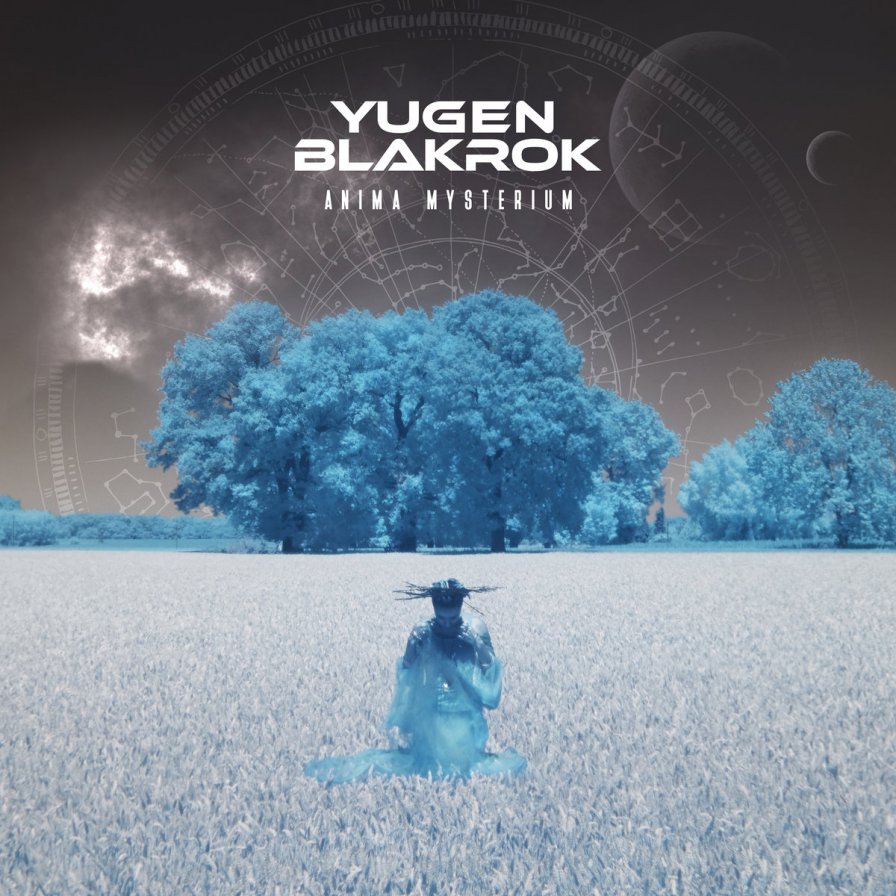
One of the easiest ways to achieve a trance state is through overstimulation. Anima Mysterium short-circuits attuned brainwaves by loading concepts to critical mass. It’s not just a matter of Yugen Blakrok’s technique — though that’s plenty impressive unto itself — it’s about sheer substance, the laws of gravity. In an era when rap seems to be getting shorter and crunchier, Yugen blasts off in the opposite direction. Every exploratory song on Anima Mysterium clocks in at over three minutes, and each beat bangs big as both words and music seek the infinite. With guest verses from Historian Himself (a professional dinosaur illustrator), Jak Tripper (a folk legend of horrorcore and battle-rap), and Kool Keith, there are no weak links, only burnt synapses.
DJ Healer
Lost Lovesongs / Lostsongs Vol. 2
[Planet Uterus]
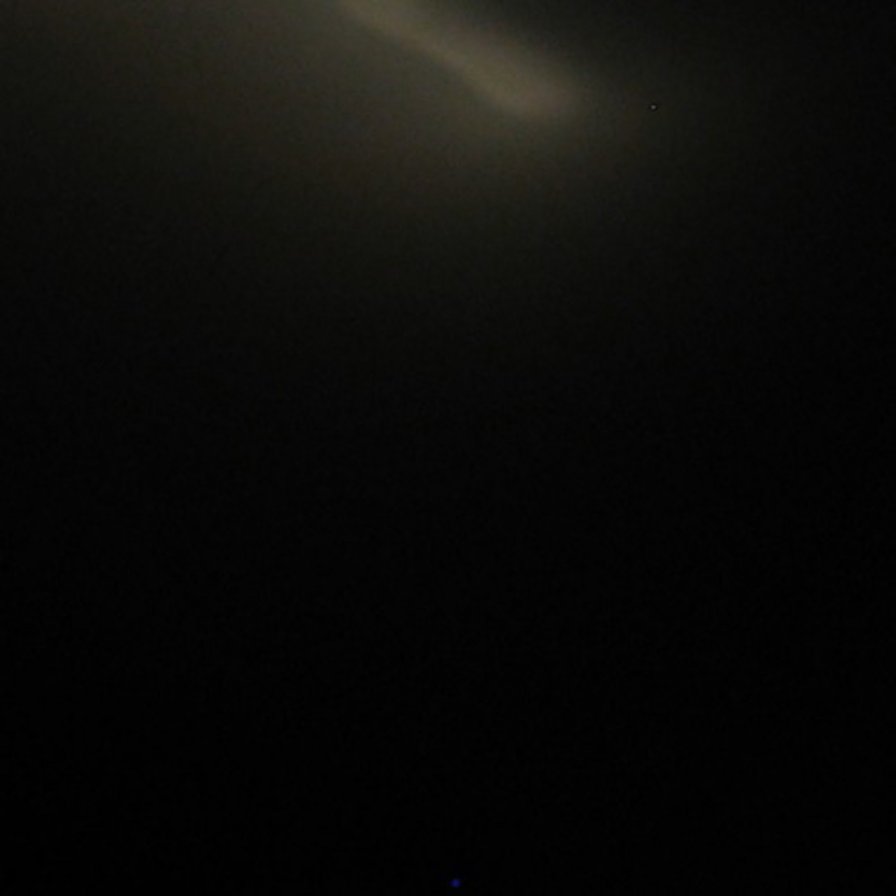
DJ Healer’s music is deceptively pure. Last year’s Nothing 2 Loose, one of our favorites of 2018, confronted how I typically evaluate ambient music; I kept dropping it into my personal top 50 and then taking it off and then dropping it back in a few spots higher every few weeks. How could something this simple, this unadorned sound so… fresh? Can clean synth pads, a looped Eli Keszler-esque beat, and vocal samples that sound like they could have been lifted from a Goldie record or a New Age self-help tape rival a GAS or Huerco S. album, much less a DJ Sprinkles mix? Lost Lovesongs and Lostsongs Vol. 2 shut down these concerns by shutting everything else out. Phenomenal ambient music is rare, but perhaps even rarer is music this committed. When DJ Healer is playing, it’s all that has ever existed, and even in its own private universe, it feels like a hard-earned hit.
Nivhek
After its own death / Walking in a spiral towards the house
[W 25th./Superior Viaduct]

On the day this was written, Scott Walker died. I think of this as I think of Liz Harris.
To become risky, to go beyond. That’s something really difficult to do in music. People want you to be something static, remember you as something particular. It’s a problem with music lovers: The demand for familiarity. When you get older, people simply expect a variation of your past, enraptured as they are in the nostalgia-industrial complex.
To grow, you have to become something beyond the anchor of nostalgia. Perhaps you can’t be the musician you once were. So escape the pastiche that confines you. Then you become dangerous.
Liz Harris hates all of us.
No, no! Nite Flights. Remember this. The indifference is the same. She has a right to change. Her path is her own; we can only bear witness. I think of Liz Harris and the implications of being in love. I think of Scott Walker walking into the void of the American heart. I think of Liz Harris, understanding death better than anyone can. I think of Liz Harris.
Helado Negro
This Is How You Smile
[RVNG Intl.]
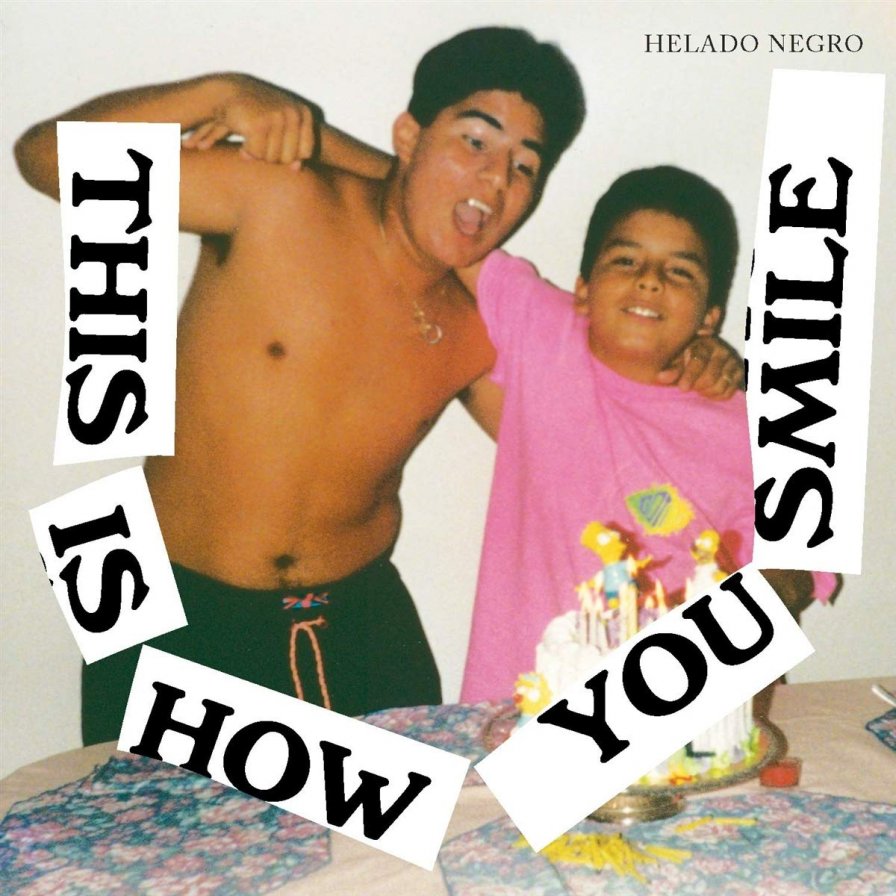
Extracting his album name from a 1978 New Yorker short story (only about a three-minute read), Helado Negro takes his soothing blend of acoustic songs and finds beauty in an era of political unrest. It’s easy for all of us to become angry — some to the point of violence — but what happens when we turn the other cheek and smile? Helado’s relentless optimism in the face of adversity is a shining example of how we could all comport ourselves, a reminder that we can find positivity even in the darkest, most trying times.
Crystallmess
Mere Noises
[Self-Released]

In 2019, we are dancing with our demons and our loved ones. For the dropouts: when the floor drops out so we swivel on air, getting by, making way, somewhere between flutter and flail, grace and grunt. Knowledge ain’t gonna get you nowhere. Cracked screen, garbled entry: luminous calibration in the tangle of the undecided. Wesh wesh, qu’est-ce qui se passe? We tune in, and what we hear are Mere Noises, limber but lumbering nevertheless, undisciplined but not undeliberate — because what is left but intention? — surging out in memory of logobi, congealing an ecstatic archive of a Black French present. We refuse amnesia as a method said Aimé Césaire in 1956 and Christelle Oyiri in 2018. And just like that, dedicated to the spiral, we circle back in refulgent torsion, coupé-décalé, but all the more whole for it.
Solange
When I Get Home
[Columbia]

Three years ago, when Solange Knowles released her magnum opus A Seat at the Table, how many of us would have guessed that it was merely a launch pad for a rocket bound for stranger destinations? On her latest release, When I Get Home, the artist has broken away from what structure means for a major label release, from the expectations of listeners still pigeonholing her to popular music royalty, from the mainstream consumer’s desires and biases. It runs less like the magnificence piece of art that we got with ASTT and more like a psychdelic, yet well-thought-out collection of tracks held together by meaningful interludes (we would be doing ourselves a disservice if we skipped them). Across these 19 tracks, Solange challenges the myth of the white American cowboy, leans into black spirituality, condemns police brutality, revels in the strength of transparency, and explores the meaning of home, and it results in an unobscured, 3-D study of self. She has, by all means, ascended.
Joragon
Bad Bitch Chainsaw Car: Melted and Casted her chainsaw into an Iron Maiden
[Self-Released]
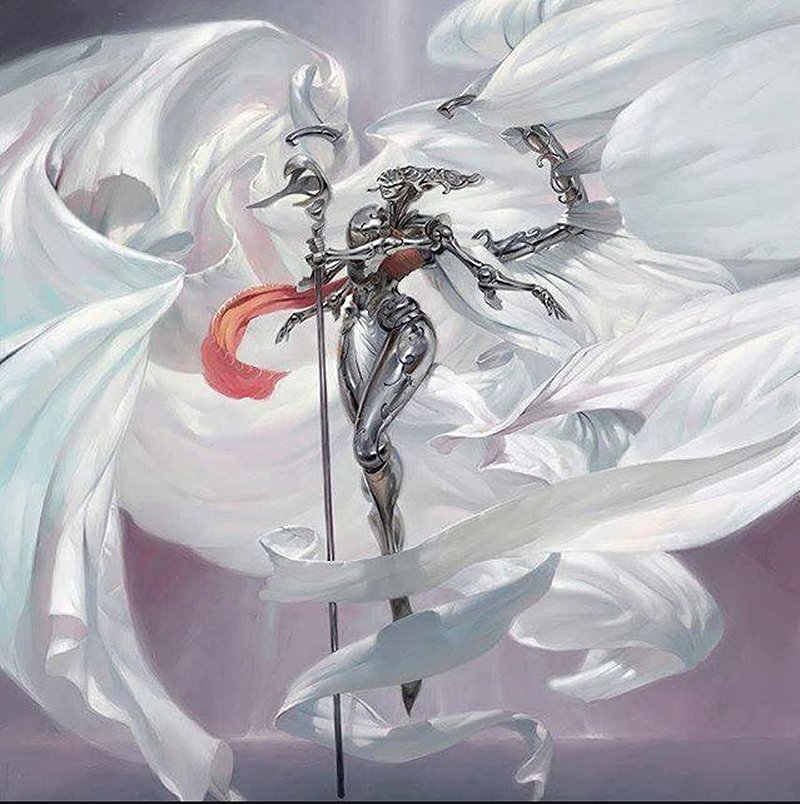
The claustrophobic expanse of Joragon’s overdrive mash maximizes time and illuminates text skewfully through interpolations of what into what into now what, bearing the mark of a supreme multicommunicator battling cosmic forces while balanced on a juggler’s ball in boundless atmosphere. As a cinematographer, he lifts the lid and lets all the light flood in. Blinded by the glitter of mechanical treble, we dance to the snap of steel bullets sparking at our heels. The impact of anxiety and action overstimulates the immune system in this sequel of airy disaster, what Joragon calls an “inside joke to myself stretched to existential horror.”
Sebastian Maria
LUNITAS 2018
[Self-Released]
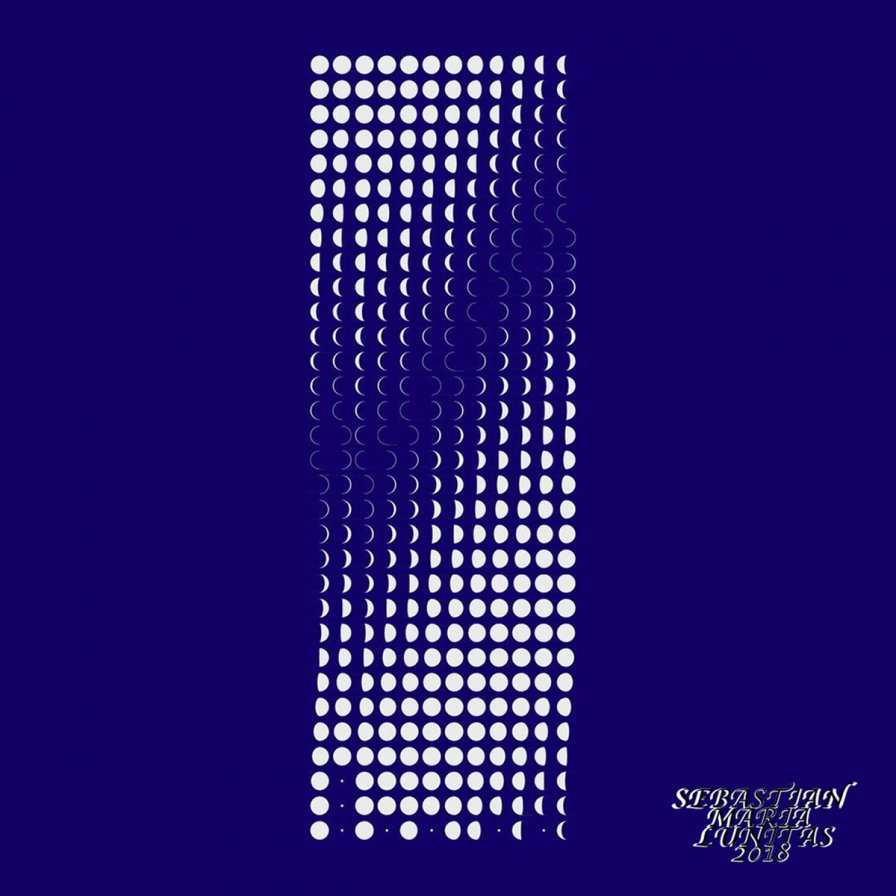
Do you ever just want to cry there’s so much noise? Highly recommended (it’s okay to cry), though Sebastian Maria suggests alternate routes: turn traffic into hocketing verse, swing your tether around the club, destroy Zalem. This DJ is no healer! LUNITAS 2018 is devotional and irreverent, for stuckness, against worldbuilding, recycled from the world’s blocks. A world reused, refused? Worlds above worlds could only remind you: It’s hard work turning loud city sounds into songs with every unfinishable concrete moon. Organized for pleasure or overwhelm, a world building! This skyscraper of field recordings MADE IN USA with 13 stories (dancefloors), waxed and waning for no longer than one song, each a crisis and an epiphany, before you struck out on your own to come face to face with Our Lady of the Snows Square, the Queens full moon circling like a clockface, shedding no tears for so much noise!
Xiu Xiu
Girl With a Basket of Fruit
[Polyvinyl]

Let’s broaden our minds: we are gross. We shed teeth with blood. We scratch skin and fleck self off to be sniffed up by other tongues. We pop and pus; we blame the smell on something else. We’re an arrhythmia of bad taste, itching noise and spiritual flatulence. Us is just a figure of meat. Imagine thinking niceness could feel right. Xiu Xiu sing our sores in the tenor they resemble, a horror show of throbbing heat like graffiti over the world. Like a joker in the art museum filleting fake masterpieces, Girl With a Basket of Fruit holds life accountable in our grossest empathy possible. It’s an extraordinary battering, some nodes colliding their fleshes into something better than the prescribed world. It comes out as a joke and knows that losing that noise is the wrong thing. It turns “Fuck your guns/ Fuck your war” to normal love. “I kind of like this one, Bob. Leave it.”
Patrick Shiroishi & Noel Meek
Break Your Eyes
[Self-Released]
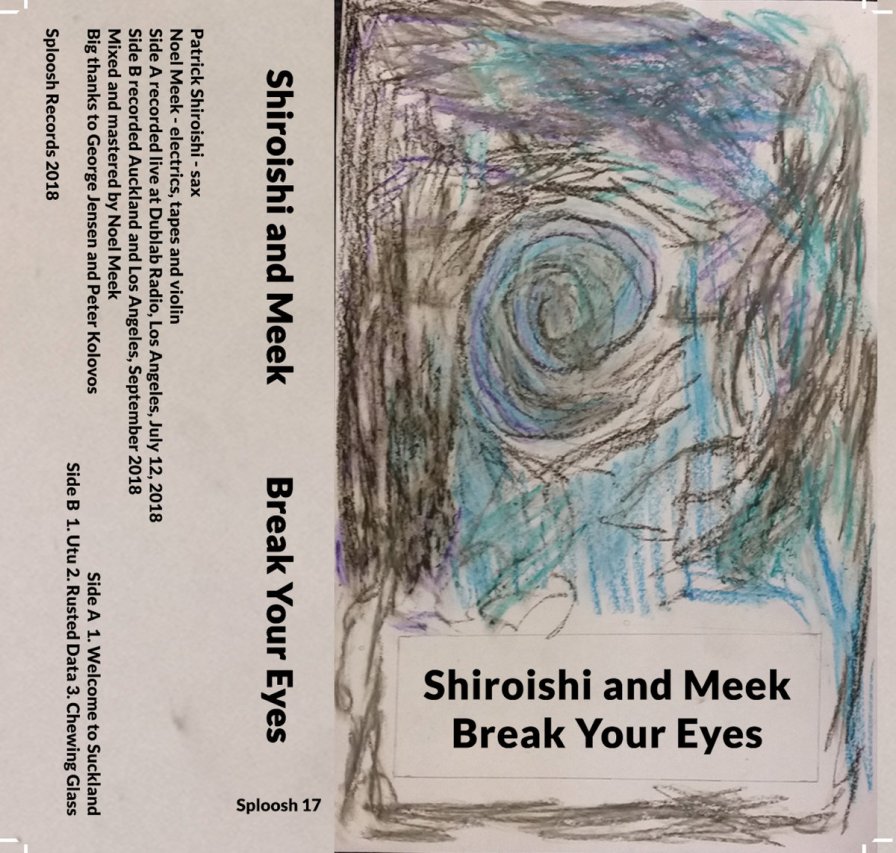
Although it is more interesting phase than AOTY, Break Your Eyes isn’t one to sleep on. Meek (electonics) and Shiroishi (sax) flutter and lurch together marvelously. Even when it hits a pregnant pause eight minud1dtes in to then embark on a litany of frayed, static-sodden false starts, the duo compellingly, intrinsically converses. Though the instrumentation differs, this somewhat resembles Meek’s record with an all-oscilating Bruce Russell. Their Classical Music was tense, low-boil noise for those who don’t bore easy. Break Your Eyes is similarly roomfunk meditative and murky. Even when the players properly attack their instruments, their compressed fidelity evokes a close-mic’d recording of agitated house flies zipping and bumping around a tight enclosure. And when Meek starts sawing at his violin for the concluding “Chewing Glass” section against Shiroishi’s moan-to-gasp soloing, that stressed gate finally pips out to our silence like a skittish Henry Flynt.
Sharon Van Etten
Remind Me Tomorrow
[Jagjaguwar]

If Sharon Van Etten’s first four albums were compiled onto a (tiny) mix tape, it would be called “I just want to curl up under the covers and weep.” Remind Me Tomorrow, however — a left turn into the embrace of dark electronics — is much better suited for a “Walking down the street at night with a single tear running down my cheek” kind of mood. While not as heartbreakingly beautiful as her previous works, Remind Me Tomorrow is no less cathartic. It’s an album that confronts how who we were informs who we are, and what we’re gonna be. The past, present and future, all tangled up for unraveling. With all traces of guitar abandoned somewhere in the East River — replaced by every synth under the setting sun — Van Etten returned from a five-year absence sounding as dynamic, confident, and uplifting as ever. Plus, have you seen her on the late-night TV circuit? She’s positively slaying.
j. b. glazer
Compact Break
[Them There]
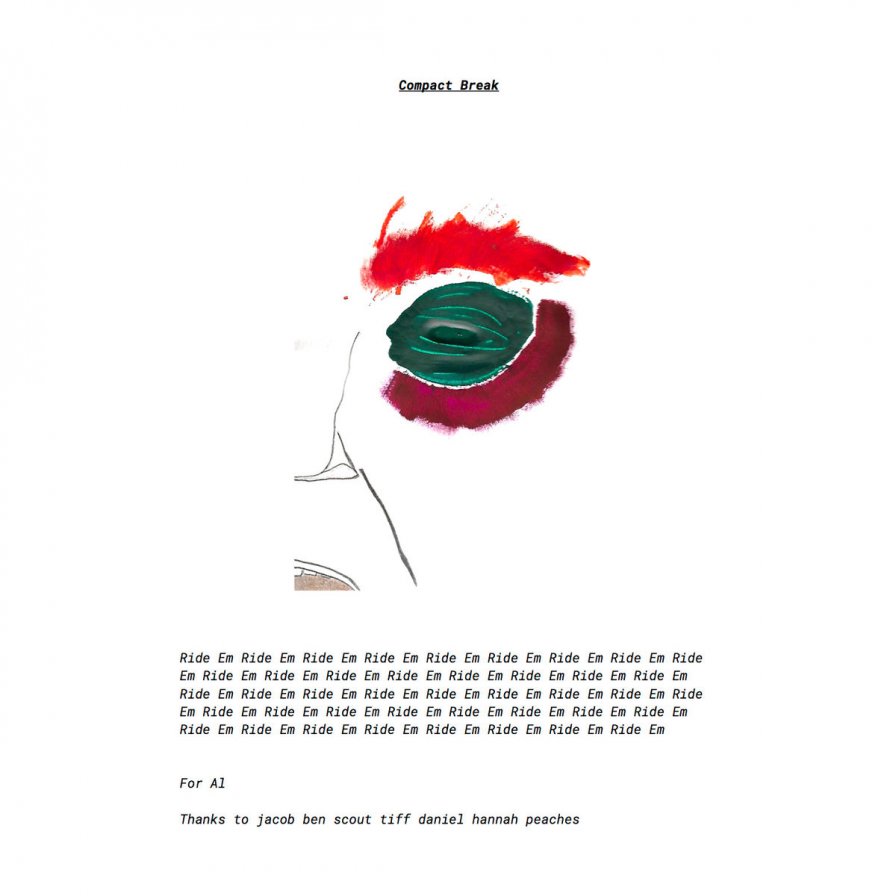
What an anxious, queasy juncture we find ourselves at. And doesn’t j. b. glazer just know it? “[B]e happy be sad be at peace.” Compact Break is, as its title suggests, a minor attempt to tear away from the deadwood of modern existence by pitting competing technologies — of machines, of the Self, of the body — against one another. The resulting 15 sideward glances form a tapestry of vagrant miniatures, each pulling in its own direction, navigating the concrète jungle on their own terms: flashes of serendipity (the “A” triptych), nouveau-“Folk Music,” and post-industrial drum loops all form the murky patchwork. Because it’s never a simple duality between happiness and sadness; it’s the everything in-between, in-between everything. j. b. glazer lives out a properly schizoid pyschodrama through the edifices, between the seams, of Compact Break. “Your love [life?] is fake.” Bad vibes forever.
JAB
Erg Herbe
[Shelter Press]
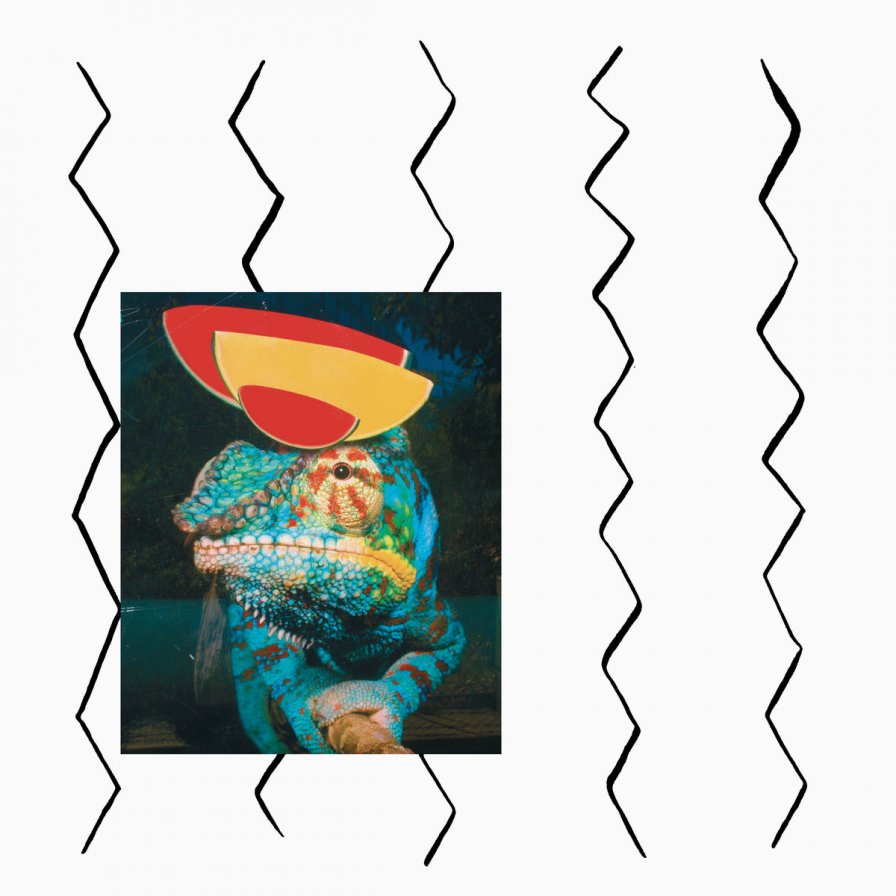
Throughout the entirety of Erg Herbe, it feels as though John Also Bennett is cajoling and tempting his audience to embrace the swirl of ambient, minimal, and classical music that makes it one of this year’s standouts. After ten years of contemplation and the refinement of ideas, the exquisite harmonies that comprise this work are deep and full enough to outline plush and expansive environments, while also allowing its listeners space to color each song with their own story. These environments may be inspired by the frantic tumult of New York, but each track appears brilliantly reflective and informed, making Erg Herbe a delightful, masterful contradiction.
Chronophage
Prolog for Tomorrow
[Cleta Patra]
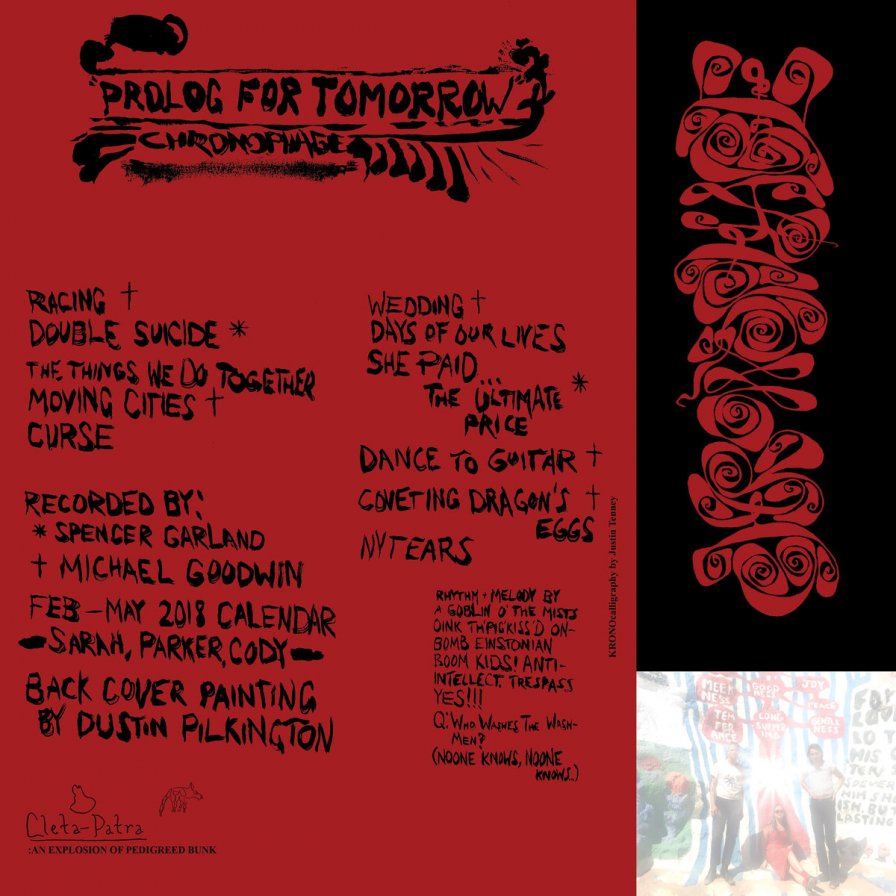
I don’t know if this makes me a rat, but I bought a bootleg cassette copy of Ton Steine Scherben’s 1972 album Keine Macht für Niemand from some folks when they passed through L.A. last fall. I wasn’t familiar with either Chronophage or Ton Steine Scherben prior to that night, but I spent the following months loudly blaring both. It became evident why these Texas punkers specifically resonated with this German anarchist proto-punk group from the 70s. Both bands couch anti-hegemonic politics in a style that shows a serious reverence for scraggly rock. Light in atmosphere but not without its jagged edge or two, this is music for the anarchist potluck lunch. Chronophage bucks trends and occasionally good taste altogether (it’s hard for me to really accept that that’s the front cover I’m looking at), and they’re all the better for it. A scene unto themselves. Listen.
Octo Octa
For Lovers EP
[Technicolour]
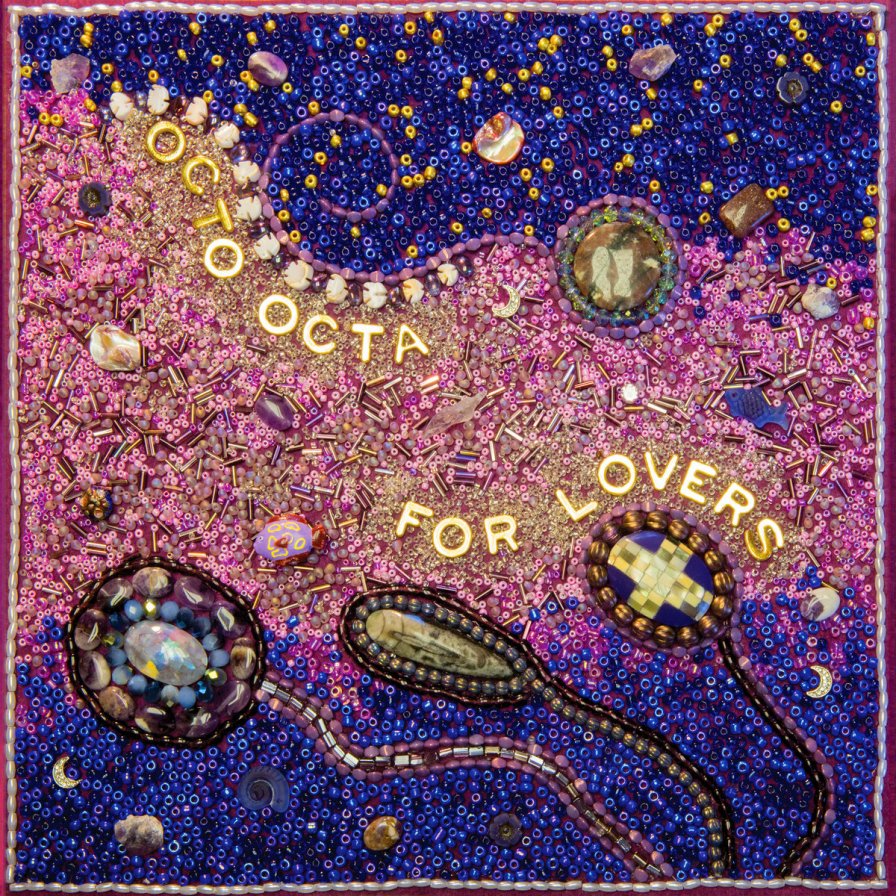
If Octo Octa’s floaty, joyous 2017 album Where Are We Going? was the sound of Maya Bouldry-Morrison revealing herself to the world after publicly coming out as transgender, her new For Lovers EP is the sound of her luxuriating in that freedom and discovering an entirely new bliss. Its three tracks feel like distinct chapters that tell a triad of human connection: the all-encompassing “I Need You” is cavernous techno at its finest, surging along on heart-racing breakbeats as Octo Octa gives thanks to those who have meant the most to her; “Bodies Meld Together” gets loungey, even slippery in its deep house celebration of physical intimacy; and “Loops For Healing” caps off the set with minimal synth lines that playfully ricochet against the silence beneath them. The tracks on For Lovers carry the same kind of velvety textures that we’ve come to expect from Octo Octa, yet its the way she relaxes into these lush, powerful grooves that illuminates a newfound level of confidence and mastery.
Curved Light
Flow and Return
[Constellation Tatsu]

The problem with Flow and Return is that I don’t know which of my senses to rely on. I guess I should default to my sense of hearing, seeing that Curved Light’s Flow and Return (Constellation Tatsu) is an audio cassette tape after all, but I can’t shake the feeling — that feeling of indecision, the one that nags the back of my mind — that I’m not doing it quite right. Peter Tran’s not helping either. When I think about his Curved Light project, all I can see are prisms and rainbows and the mechanics of light penetrating the human eye. It’s all that modular synthesizer, which I’ve tried to pin down already in my Grinder post for Tran’s other Q1 Curved Light release, Airs of Modality (Unifactor): “[It] sounds like clouds billow, pastel and melodic and buoyant and light.” Perhaps I should be relying on my sense of sight to take this all in? Either way, Flow and Return is so good that it renders me a confused and spaced-out dummy as it fully envelops my consciousness.
The Caretaker
Everywhere at the end of time - Stage 6
[History Always Favours the Winners]

I’ll confess that I lost interest in The Caretaker’s monumental Everywhere at the end of time project somewhere around stage 3 or 4 — it was feeling too programmatic, the narrative smothering the work, the concept itself either silly or mildly offensive. But with the final installment, it all came slamming into place as an astounding whole when listened to in one massive go. Over 6.5 hours, ballroom jazz slips apart, 72s turning into loops of sound-memory, texture-memory, tone-memory, finally becoming a neurological process in its completeness, in the memory that begins to work and reformat in real time over its hefty duration. And, yes, the final installment is the finest, a truly embodied reworking of hauntology, a longing for a few hours ago, a few years ago, a few worlds that never existed and were never known ago. Bless it for going fully corny in its final minutes, that static-frazzled melodramatic orchestra rising up, giving us the release his concept might want to refuse but that our decaying, sappy minds want. It’s OK to get what you want, especially in times of loss. Leyland Kirby met the implications of his project, all of them, head on, and it was deeply felt. OK, you’ve got me now, it’s a masterpiece.
More about: ana roxanne, Angel Marcloid, Ariana Grande, Chronophage, Crystallmess, Curved Light, DJ Healer, Grouper, Helado Negro, J. B. Glazer, JAB, Jay Mitta, Joragon, Maja S.K. Ratkje, Nivhek, Noel Meek, Nonlocal Forecast, Octo Octa, Patrick Shiroishi, Sebastian Maria, Sharon Van Etten, Solange, The Caretaker, Triad God, Xiu Xiu, Yugen Blakrok
For each year's first three quarters, we celebrate by sharing a list of our favorite music releases. Unlike our year-end lists, these quarter features are casually compiled, with an aim to spotlight the underdogs and the lesser-heard among the more popular picks. More from this series



